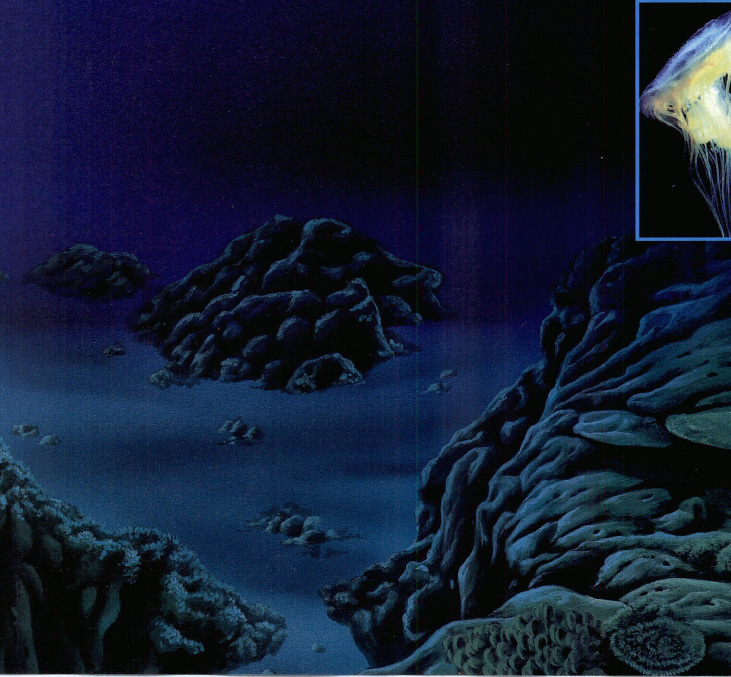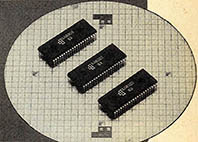우주의 형성에 어떠한 힘이 작용했을까? 이 문제는 지금까지 많은 천문학자들을 혼란스럽게 만들었다. 그런데 최근 박창본이라는 프린스턴 대학의 대학원생이 컴퓨터를 이용한 혁신적인 방법으로 이 문제와 씨름하기 시작했다.
문제의 요지는 이렇다. 대기중에서 사방으로 퍼져 나오는 희미한 극초단파 방사선의 연구를 통해서 천문학자들은 우주가 하나의 작은 물체로부터 시작해 팽창된 것이라고 확신하게 되었다. 이 희미한 방사선은 아주 균일하게 퍼져나오는 것이어서 최초의 소물체는 하나의 동위원소였으며 그속에는 어떠한 덩어리도 없는 균일한 상태라고 생각했던 것이다. 이 물체가 고른 상태를 유지하며 팽창, 부드러운 가스 덩어리로 이루어진 우주를 형성하게 됐다는 것이다.
그러나 실제는 그렇지 않았다. 최초의 소물체는 덩어리로 부서져 은하수가 되었고, 이 은하수가 다시 덩어리로 와해되어 개개의 별들이 되었다. 은하수가 고르게 우주로 퍼져 있다면 앞의 생각을 설명할 수 있었을지 모른다. 그러나 은하수는 덩어리 혹은 덩어리속의 덩어리로 존재한다.
이 뿐만 아니라, 은하수는 긴 선과 굴곡을 형성, 거대한 빈 공간(그속에서 어떠한 은하수도 존재치 않는다)을 둘러싸고 있다. 이는 마치 우주가 빈 구멍 주위에 은하구조를 이루고 있는 스폰지와 같다는 뜻이 된다.
우주가 어떻게 이러한 모습을 하게 됐을까? 과연 어떠한 힘이 작용하여 균형있던 물체를 이와 같이 불규칙한 모습으로 만들었을까?
우주에는 네가지 형태의 힘이 존재하고 이들은 물체의 상호작용에 영향을 미친다. 그중 하나나 두가지 이상의 힘이 우주를 형성시켰음에 틀림없다. 네가지 힘 가운데 두가지 힘은-강한 핵력과 약한 핵력-원자의 핵 안에서만 작용할 뿐이고 우주에는 어떠한 영향도 끼치지 못한다. 세번째 힘인 전자기력은 끌어당기는 힘과 밀어내는 힘 모두를 갖고 있다. 이 두 힘은 서로 균형을 이루고 있기 때문에 전자기력은 전 우주에 그리 큰 영향력을 행사하지 못하고 있다.
이제 남은 것은 중력 뿐이다. 천문학자들은 중력 한가지만으로 우주가 형성된 과정을 연구해야 한다. 중력이 이 과정을 설명해 줄 수 있겠지만 계산에 의하면 너무나도 긴 시간을 필요로 한다. 심지어는 몇몇 천문학자들이 계산한 바에 따르면 은하수의 몇몇 큰 성단(星團)들은 우주의 실제 나이의 몇 배 이상에 해당하는 기간이 지난 후에야 중력에 의해 형성될 수 있었을 것이라고 한다.
물론 중력은 우리가 생각하는 것보다 훨씬 강할지 모른다. 우리는 별이나 은하수만을 관측할 수 있을 따름이지만 그 이상의 중력이 존재한다는 분명한 증거가 있다. 우주의 모든 사물의 90% 이상을 차지하고 있을 보이지 않은 것(암흑체)들의 본질에 대해 우리는 지금 무지의 상태에 있다. 이러한 사실을 인정하더라도 우주가 단지 중력만으로 현재의 상태에 이르렀을 것 같지는 않다. 그러나 지금은 달리 연구할 여지가 전혀 없는 상태다. 이것이 바로 천문학자들이 직면하고 있는 난제인 것이다.
논문상의 가설이나 방정식을 갖고 연구하는 것만으로는 충분치 못하다. 보다 직접적인 시도를 해보는 것이 필요하다. 중력만으로 우주를 창조하려고 했을 때, 어떤 일이 일어나는지 살펴본다든가 하는 것도 그 한 방법이 될 수 있다. 현실적으로 이러한 일을 하는 것은 불가능하다. 그러나 올바른 프로그래밍을 통해, 컴퓨터가 우주의 생성을 모방하도록 할 수는 있을 것이다. 바로 이것이 박창본씨가 하고자 하는 것이었으며 그는 지난 2월에 그 결과를 벌표했다.
박창본씨는 2억광년 넓이의 우주를 만들어 냈다. 이 범위 안에다 그는 보통의 물질 덩어리(별들과 은하수를 만들어 낸)를 나타내는 2백만개의 수학적 미립자를 분포시켰다. 여기에 또다시 암흑체를 나타내는 2백만개의 다른 미립자를 추가시켰다. 그 다음 이미 알려진 중력 법칙에 따라 컴퓨터가 어떻게 여기에 힘이 작용하는가를 나타내도록 프로그램을 작성, 마치 각 입자들이 다른 입자의 중력에 영향을 받아 끌리듯이 움직이게 했다.
이 실험은 컴퓨터 스크린을 사용한 종래의 유사한 실험 중 가장 규모가 큰 것이었다. 입자들은 스크린 속에서 구조를 형성, 빈 공간을 둘러싼 긴 완곡선 모양의 은하수처럼 보인다. 간단히 말해서, 이 실험은 현재 실존하는 우주와 비슷한 모습을 만들어낸 것이다.
물론 박창본씨가 이루어 낸 것은 해답의 시작을 찾는데 도움을 주었을 뿐이다. 보다 큰 우주를 대상으로 실험한다는 것은 매우 중요한 일이다. 수백만의 미립자 대신에 여기서는 수십억, 수조개의 미립자들을 다루는 것이 좋다. 그리고 나아가서 그 프로그램을 조사, 가설이 타당했음을 확실히 증명해야 할 것이다.
다른 천문학자들도 보다 크고 어쩌면 보다 타당한 모형을 만들기 위해 노력하고 있다. 그 결과로서 보다 크고 세밀한 우주가 창조돼 실제 우주와 비교·연구될 수 있을 것이다.
최근에야 신형 슈퍼 컴퓨터 덕택에 이것이 가능해지게 되었다. 앞으로는 보다 강력한 컴퓨터가 출현해 이보다 방대한 문제의 해결에 이바지할 수 있을지도 모를 일이다.
Constructing a Universe
What force accounts for the shape of the universe? This problem has been driving astronomers to distraction, but Changbon Park, a graduate student at Princeton University, has recently tackled it in a dramatic way by using a computer.
The problem is this. Studying the faint radiation of microwaves that comes from every direction in the sky has convinced astronomers that the universe started as a small object that expanded in all directions. The faint radiation is so exactly the same from every direction that it is necessary to suppose that the original small object was homogeneous, that it was perfectly even and had no clumps in it. As it expanded, it perhaps should have remained even and produced a universe that consisted of a smooth ball of gas.
It didn't. The original object collapsed into clumps that became galaxies, and the galaxies collapsed into clumps that became individual stars. This might still have been explainable if the galaxies were spread evenly through the universe, but they aren't. They exist in clusters and in clusters of clusters.
Not only that but the galaxies form long lines and curves that surround huge "voids" within which there are practically no galaxies. It is as though the universe were a vast sponge made up of galactic structures surrounding holes.
How could the universe have come to look this way? What would act to force the originally evenly spread-out matter into such an oddly uneven shape?
There are exactly four types of forces in the universe that control the ways in which objects interact. One or more of them must have shaped the universe. Of the four forces, two-the strong nuclear force and the weak nuclear force-act only within atomic nuclei, and have no effect on the universe as a whole. A third, the electromagnetic force, spreads outward for light-years but has the capacity to both attract and repel. The two tendencies are practically in balance so that the electromagnetic force has little effect on the universe as a whole.
That leaves only the gravitational force to do the work, and astronomers have to figure out a way in which gravitation(ital) alone(unital) can shape the universe. Gravitation could account for this process, but according to calculations it would have taken an impossibly long time. Some of the larger clusters of galaxies, astronomers calculated, could have been formed by gravity only after a period many times greater than the actual age of the universe.
Of course, gravitation is probably stronger than we expect. We can only see stars and galaxies, but there is evidence that there is much more gravitational force than that. There is "dark matter," of whose nature we know nothing, that may make up 90 percent or more of all matter in the universe. However, even allowing for that, it doesn't seem possible that the universe could have been created in its present shape by gravity alone--yet there is nothing else to work with. That is the dilemma that astronomers now face.
But working with assumptions and equations on paper may not be enough. It may be useful to attempt a more direct attack--to actually try to create a universe by gravity alone and see what happens. Naturally, this cannot be done in reality. However, the correct programming might allow a computer to simulate the construction of a universe. This is what park tried to do. He presented his results in February.
Park set up a "universe" that was 200 million light-years across. Within this area, he placed 2 million mathematical particles representing clumps of ordinary matter-the stuff out of which stars and galaxies are built. He also added 2 million other particles representing dark matter. He then programmed the computer to allow the particles to move as though they were each being pulled by the gravitational effect of all the others, according to the known rules of how this force works.
It was the largest such simulation ever done, and behold, on the computer screen, the dots of matter formed into structures that looked like galaxies arranged in long curved lines surrounding voids in which there were few or none. It short, the simulation produced something like the universe that actually exists.
Of course, even what Park has done has only served to probe the beginnings of an answer. It will be important to work with a much larger "universe." Instead of millions of particles, it would be nice to work with billions or even trillions. Furthermore, one would have to check the programming and make sure that the assumptions behind the instructions were valid.
Other astronomers are laboring to make larger, and perhaps more valid simulations, and it may be that, as a result, "universes" can be constructed in greater and greater detail and the results compared with reality.
This has become possible only very recently because of the new supercomputers. The coming of even more powerful computers may help solve still more intractable problems.
(C) 1990, Los Angeles Times Syndicate
이 기사의 내용이 궁금하신가요?
기사 전문을 보시려면500(500원)이 필요합니다.
1990년 06월 과학동아 정보
🎓️ 진로 추천
- 천문학
- 물리학
- 컴퓨터공학
1990년 06월 과학동아 다른추천기사

















